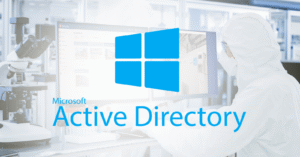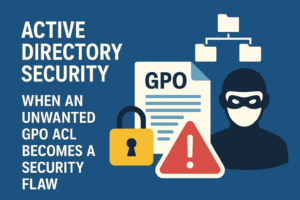Quantum‑Safe Encryption: Preparing for “Q‑Day”
Description: Explore why quantum computing threatens today’s encryption, current post‑quantum standards (Kyber, Dilithium, HQC), adoption strategies, and how organizations can prepare now for “Q‑Day.” Sommaire: 1.Introduction 2.Understanding the Quantum Threat 3.What Is Post‑Quantum Cryptography (PQC)? 4.2025 Milestones in PQC 5.Who Must Prepare and Why 6.5‑Step Migration Strategy 7.Challenges & Solutions 8.Looking Ahead: 2026–2027 and Beyond…
Description:
Explore why quantum computing threatens today’s encryption, current post‑quantum standards (Kyber, Dilithium, HQC), adoption strategies, and how organizations can prepare now for “Q‑Day.”
Sommaire:
1.Introduction
2.Understanding the Quantum Threat
3.What Is Post‑Quantum Cryptography (PQC)?
4.2025 Milestones in PQC
5.Who Must Prepare and Why
6.5‑Step Migration Strategy
7.Challenges & Solutions
8.Looking Ahead: 2026–2027 and Beyond
9.Conclusion & Call‑to‑Action
1. Introduction
In a world racing toward Q‑Day—when quantum computers can crack RSA, ECC, and other current encryption—being proactive is no longer optional. Cloud providers, governments, and security teams are transitioning to post‑quantum cryptography now, not later.
2. Understanding the Quantum Threat
Quantum computers exploit superposition and entanglement to break asymmetric algorithms in minutes or seconds—a concept once unimaginable MEA Tech Watch+15The Australian+15PostQuantum.com+15csrc.nist.gov+15Financial Times+15nvlpubs.nist.gov+15MEA Tech WatchCyber Security News.
Many attackers already use a “harvest now, decrypt later” tactic—stealing encrypted data today, planning to decrypt it once powerful quantum PCs exist The Australian+5Google Cloud+5infosecurity-magazine.com+5.
3. What Is Post‑Quantum Cryptography (PQC)?
PQC refers to encryption algorithms safe from both classical and quantum attacks.
NIST’s initial standards released in August 2024 include NISTiotworldtoday.com+15csrc.nist.gov+15NIST+15:
- ML‑KEM (CRYSTALS‑Kyber) for key agreement (FIPS 203)
- ML‑DSA (CRYSTALS‑Dilithium) for digital signatures (FIPS 204)
- SLH‑DSA (SPHINCS+) as backup signatures (FIPS 205)
4. 2025 Milestones in PQC
🧱 HQC becomes the fifth PQC standard
On March 11, 2025, NIST added Hamming Quasi‑Cyclic (HQC) as a backup key-establishment algorithm alongside Kyber—fifth overall PostQuantum.com+14NIST+14Wikipédia+14Cyber Security News+9Wikipédia+9nvlpubs.nist.gov+9. Draft specs arrive 2026, final by 2027.
🌐 Cloud providers join in
Google Cloud now supports quantum‑safe digital signatures (FIPS 204/205) in its Key Management Service and HSM preview Cyber Security News+4Security Boulevard+4infosecurity-magazine.com+4.
Google warns: treat PQC like Y2K—urgent, essential, and non-negotiable Google Cloud+6Google Cloud+6iotworldtoday.com+6.
5. Who Must Prepare—and Why
- Regulated sectors (banking, healthcare, defense) with long-lived sensitive data.
- Organizations using TLS, VPNs, SSH, S/MIME, PKI.
- Cloud-native companies leveraging KMS/HSM (e.g., Google Cloud).
- Entities running critical infrastructure or IoT that can’t patch easily mid‑stream.
6. 5‑Step Migration Strategy
| Step | Action |
|---|---|
| 1. Inventory Crypto | Identify systems using RSA/ECC—TLS, VPN, certs, IoT firmware. |
| 2. Assess Risk | Use a Crypto‑Agility Index: data lifespan, sensitivity, exposure. |
| 3. Build Agility | Install modular crypto APIs supporting algorithm swaps. |
| 4. Pilot Hybrid PQC | Test dual-suites—Kyber+RSA or Kyber+HQC—monitor performance (e.g., AVX2 acceleration) NISTThe Times+3NIST+3csrc.nist.gov+3csrc.nist.govThe Wall Street Journal+15arXiv+15Google Cloud+15. |
| 5. Roll Out PQC | Choose standards (Kyber primary, HQC as backup)—update firmware, HSMs, cloud stacks. |
7. Challenges & Solutions
- Backwards compatibility → Hybrid TLS deployments .
- Performance overhead → Leverage AVX2, hardware acceleration .
- Key management upgrades → PQC-compliant PKI and HSM support (e.g., Google Cloud).
- Evolving standards → Track NIST roadmap (HQC draft 2026, final 2027) arctiq.com+7NIST+7csrc.nist.gov+7.
8. Looking Ahead: 2026–2027
- Final standards for HQC in 2027.
- PQC by default in TLS 1.4 and major firmware.
- Federal PQC mandates across North America and EU.
- Hardware integration (crypto chips, IoT bootloaders) critical.
9. Conclusion & Call‑to‑Action
“Q‑Day may still be years away—but the threat isn’t. Attackers are stockpiling encrypted data today. If your organization still relies on RSA/ECC without crypto agility, your infrastructure is aging. 2025 is the year to embrace post‑quantum cryptography—or risk becoming obsolete before quantum hits.”
Your next steps:
- Start a PQC inventory and risk assessment now.
- Pilot hybrid Kyber deployments.
- Partner with cloud/HSM providers to enable support.
🎨 Visuals Suggestions
- Timeline infographic: RSA → Kyber → HQC (2027).
- Comparison table: RSA/ECC vs Kyber vs HQC performance stats.
- Hybrid TLS handshake sequence diagram.




CreatBot D600 Pro 2 Industrial 3D Printer is a advanced industrial 3D printer designed for businesses demanding precision, dependability, and flexibility in 3D printing. As part of the D600 series, it incorporates a large build volume, advanced dual extrusion technology, and high-performance features suitable for industrial use and complex materials.
Overview of the CreatBot D600 Series
The CreatBot D600 and D600 Pro establish new standards for large format 3D printer solutions. With a build volume of 600 ? 600 ? 600 mm, these professional large format 3D printers cater to a broad spectrum of industrial 3D printing demands, from big model prototyping to end-use production. The D600 Pro lineup and the latest D600 Pro 2 introduce further enhancements in performance and material compatibility.
Main Features and Benefits
Industrial-Grade Large Build Volume
Build volume: 600 ? 600 ? 600 mm
Ideal for large format 3D printing projects and industrial 3D printing
Supports technical materials and intricate models
Dual Extruder System and High-Temperature Printing
4th generation dual 1.75mm extruders for multi-material printing
Right and left-side extruder design for flexible printing
Supports high performance 3D materials, including PLA filament, nylon, carbon-fiber, and more
Maximum nozzle temperature: up to 420°C (high-heat)
Heated build chamber for high-performance applications
Precision, Speed and Reliability
Professional 3d print quality with accurate layer resolution
Advanced motion system for fast printing and robust performance
Consistent printing speed up to 120 mm/s
Reliable operation for continuous industrial use
Compatible Materials and Filaments
Broad Filament Support
Works with a broad spectrum of filament: PLA, ABS, PC, PETG, PVA, nylon filament, carbon-fiber, and more
Designed for engineering-grade materials and functional prototyping
Advanced dual extruder 3d printer enables multi-material and soluble support printing
Applications: From Prototyping to Production
The CreatBot D600 Pro 2 and D600 Pro serve a diverse set of applications:
Rapid prototyping and large format 3D print models
Functional parts for automotive, aerospace, and engineering
Tooling, jigs, and fixtures for industrial production
Art, architecture, and creative projects requiring large-scale industrial 3d printing
Specs
Model: CreatBot D600 Pro 2, D600 Pro, D600
Build volume: 600 ? 600 ? 600 mm
Extruder: Dual extruder, 4th generation 1.75mm dual extruders and hotends
Max nozzle temperature: 420°C
Bed temperature: up to 100°C
Filament diameter: 1.75 mm
Layer resolution: 0.05 – 0.3 mm
Supported filament: PLA, ABS, PC, PETG, PVA, nylon, carbon fiber, engineering-grade materials
Printing speed: up to 120 mm/s
Enclosure: Heated, for improved material properties
Interface: Touchscreen interface
File formats: STL, OBJ, AMF
Comparison: D600, D600 Pro, and D600 Pro 2
Key Differences
D600 model: Entry-level industrial large scale 3d printer for basic applications
D600 Pro model: Enhanced with heated chamber, auto bed leveling, and wider material support
D600 Pro 2 (professional version): Adds higher printing speed, improved reliability, and HS (high speed) configuration
Additional CreatBot Printers
CreatBot D1000 for even larger build volumes
CreatBot 3D printer includes industrial and professional 3d printer solutions
FAQ
What materials can the CreatBot D600 Pro 2 print?
The CreatBot D600 Pro 2 is compatible with a wide range of filament including PLA, ABS, PETG, PC, nylon filament, carbon-fiber, and other engineering-grade materials.
Maximum Build Volume of D600 Pro 2
The build volume is 600 ? 600 ? 600 mm, supporting large model and industrial 3d printing needs.
Does the D600 Pro 2 support dual extruder and high-temperature printing?
Yes, it is equipped with dual extrusion technology and reaches up to 420°C for high-temperature printing process.
Differences Between D600 Pro 2 and D600 Pro
The Pro Version offers higher print speed, improved reliability, and the new HS (high speed) option.
Summary
The D600 Pro 2 and the CreatBot D600 Pro industrial professional set the benchmark in the industrial large scale 3d printer category. With exceptional build volume, robust dual extrusion system, compatibility with engineering-grade materials, and high performance across applications, they empower businesses and engineers to achieve new heights in industrial 3D print.
large format 3d printer
d600 and d600 pro
d600 pro series
d600 series